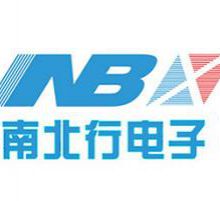DS90UB941ASRTDRQ1 serializer/deserializer TI original stock
Negotiable /Piece
Min.Order:1 Piece
Quick Details View All >
Shenzhen nanbeihang Electronic Development Co., Ltd
Product Details
characteristic
Meets AEC-Q100 standards for automotive applications, including the following features:
Device temperature class 2: ambient operating temperature from - 40 ℃ to+105 ℃
Support pixel clock frequency up to 210MHz to achieve 3K (2880x1620) (at 30Hz), QXGA (2048x1536), 2K (2880x1080), WUXGA (1920x1200) or 1080p60 (1920x1080) resolution and 24 bit color depth
The MIPI D-PHY/Display Serial Interface (DSI) receiver provides a high bandwidth interface for connecting to a video processor or FPGA
Dual DSI input ports with up to 4 data channels per port
Up to 1.5Gbps per channel
Super frame with symmetric and asymmetric unpacking function
ECC and CRC generation
Virtual channel function
Single and dual FPD Link III outputs
Single link: up to 105MHz pixel clock
Dual link: up to 210MHz pixel clock
Provide functional safety
Documentation to assist in ISO 26262 system design
Symmetric and asymmetric video separation
explain
DS90UB941AS-Q1 is a two-way DSI to FPD-Link III bridge serializer designed for automotive infotainment applications. When used with FPD-Link III DS90UB940N-Q1, DS90UB948-Q1, DS90UB924-Q1, DS90UB926Q-Q1, or DS90UB928Q-Q1 deserializer, DS90UB941AS-Q1 can provide single or dual channel high-speed serial flow through cost-effective 50 Ω single ended coaxial cable or 100 Ω differential shielded twisted pair (STP) and shielded quad (STQ) cable. In order to cope with the increase in the number and difference of displays in the infotainment system, DS90UB941AS-Q1 can support symmetrical and asymmetrical separation.
The DS90UB941AS-Q1 can integrate video data on two differential pairs to simplify system design and reduce the size and weight of the application interconnect. FPD-Link III interface supports video and audio data transmission and full duplex control, including I2C communication on the same high-speed serial Link and up to eight I2S audio channels. The EMI is minimized by using low voltage differential signaling, data reordering, and random generation.
application
• Automotive infotainment system:
– IVI audio head unit and HMI module
– Central information display
– Digital instrument cluster
– Rear seat entertainment system
Contact Supplier

You May Like

New Products
Popular Searches
Recommended Products
Find Similar Products By Category